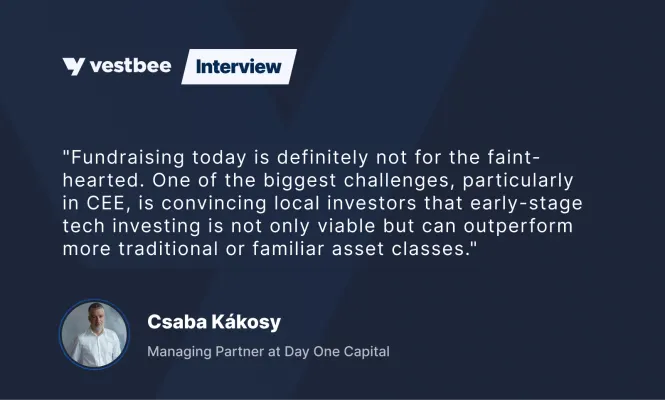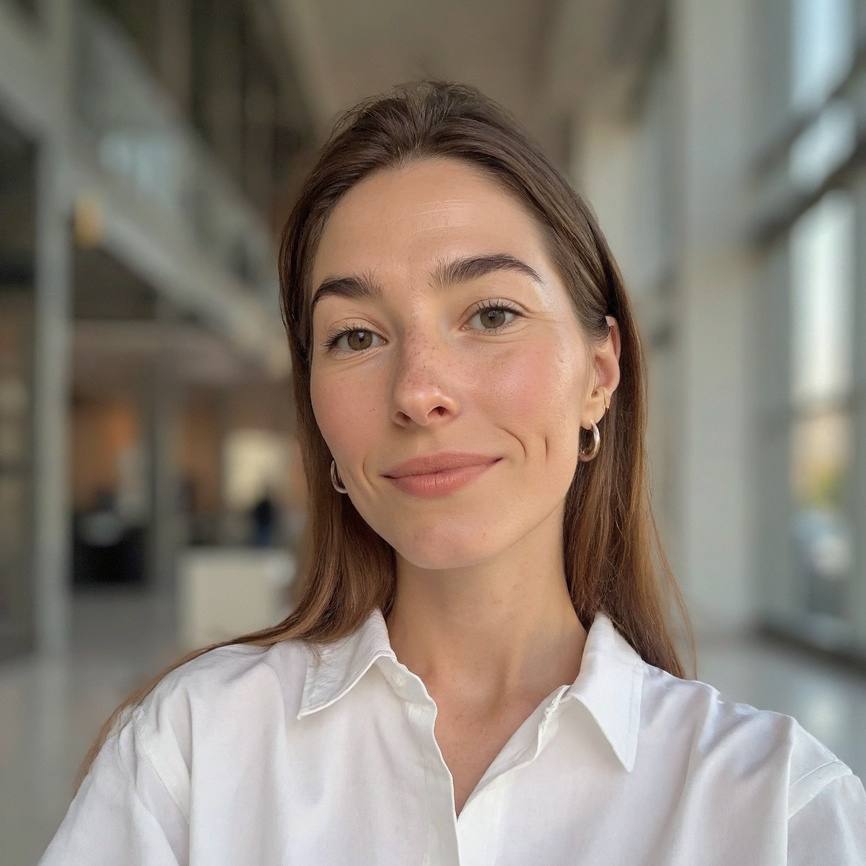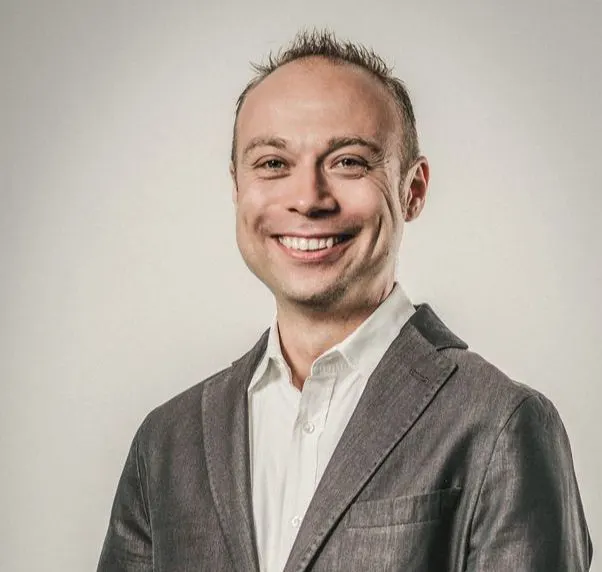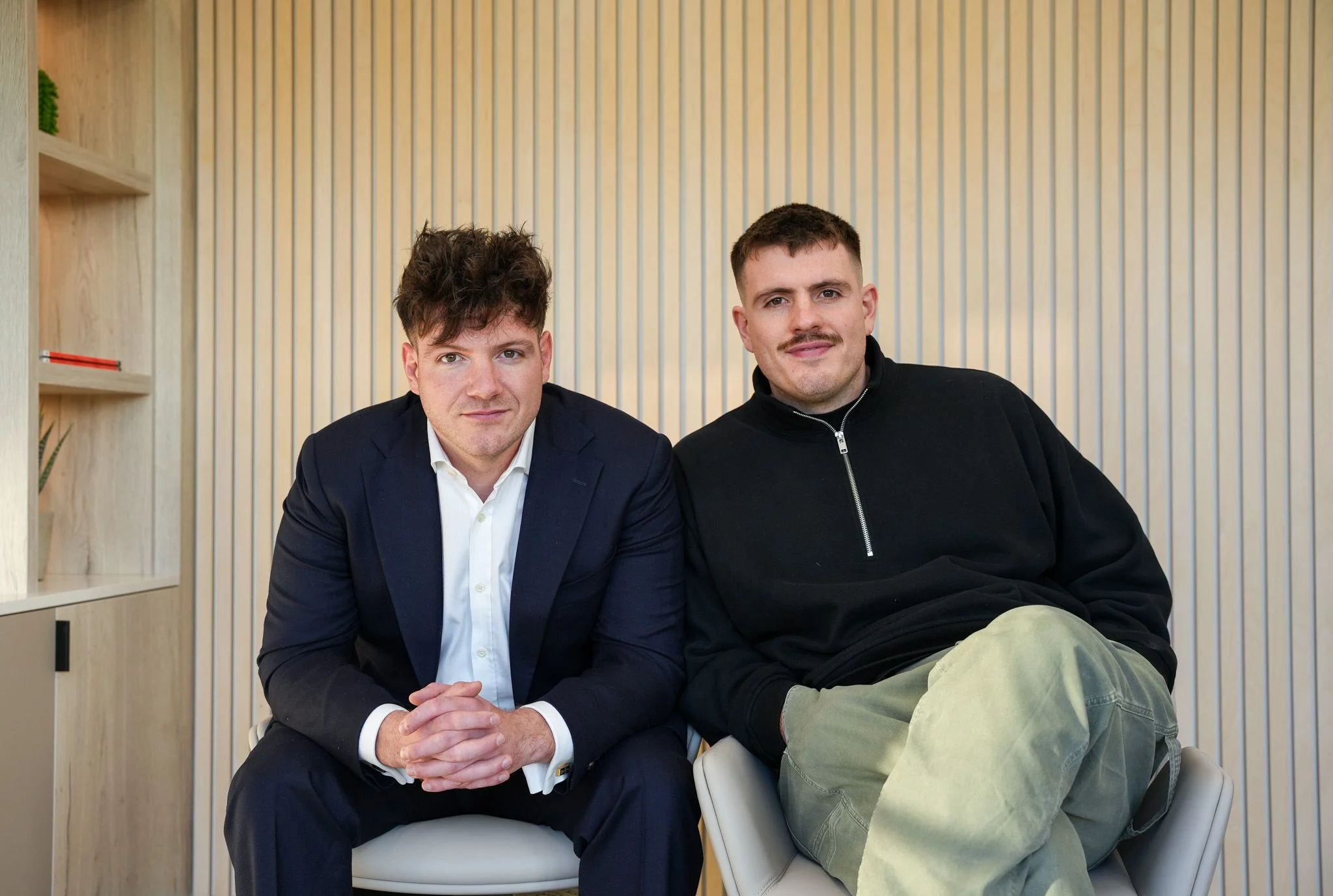Day One Capital has just announced a new fund, reaching a €45 billion second close and moving toward a planned €60 million final close. To understand how the firm reads the current dynamics of the CEE market, I spoke with Csaba Kákosy, the firm's Managing Partner. We discussed the lessons from the team's earlier vintages, the realities of fundraising today, and the signals they're tracking across deeptch, AI, and early-stage founder talent in the region.
Looking back at your earlier vintages, how would you assess the overall performance of the portfolios — and which learnings directly shaped the strategy behind the new fund?
Looking back at our earlier vintages, I can say with confidence that both portfolios performed well. Our very first fund was small, just €4 million, but despite the size, it had an excellent hit rate with 4 companies that grew to success. We backed now-mature companies like Oradian and Commsignia, sold NowTechnologies to Sunrise Medical, and, of course, we were among the first institutional investors in AImotive, which became Hungary’s largest startup acquisition to date.
Our second fund, launched in 2018, expanded our footprint. Its portfolio of 20 companies is maturing well. Not counting Animoca Brands (a 5.9 billion unicorn in which we are investors since they acquired our portfolio company, iGamee), four of our companies have already reached valuations well above $100 million, and an additional three will join them in the next few months. We’ve also seen successful early exits with Tresorit, Webshippy, and Gamee. By European benchmarks, this fund is performing in the upper quartile of its vintage, and in CEE it’s within the top 10–15%.
What we learned from these vintages is that you must invest extremely early, but only into teams capable of competing globally from day one. Talent alone is not enough: clarity of thinking, execution ability, ambition, and, frankly, a bit of scrappy mischievousness all matter.
These learnings directly shaped the new fund: we’re doubling down on early-stage founders building breakthrough technologies with global potential.
Raising funds in today’s market is challenging. What were the biggest obstacles in completing the €45 million second close, and what ultimately helped you secure commitments from your LPs?
Fundraising today is definitely not for the faint-hearted. One of the biggest challenges, particularly in Central and Eastern Europe, is convincing local investors that early-stage technology investing is not only viable but can outperform more traditional or familiar asset classes. Many private investors in our region still default to real estate or public markets, so there is a significant educational component in conversations.
What ultimately helped us is our track record. We could demonstrate that our earlier vintages delivered real outcomes, major acquisitions, top-tier follow-on investors, and outstanding founders. That gave LPs confidence that not only does the CEE ecosystem produce globally competitive startups, but that we, as a fund, can consistently identify and support them early.
Who are the LPs supporting this vehicle, and what final fund size are you targeting as you move toward the last closing?
The fund reached a €45 million second close, and we’re on track for a final close in early 2026. Our LP base is a healthy mix: around 70% institutional investors, including the European Investment Fund (EIF) and MFB Invest, and about 30% private investors, many of whom are experienced founders, entrepreneurs, and family offices.
We’re targeting a final fund size of approximately €60 million, which will allow us to build a concentrated portfolio of around 20 companies across the region.
You mentioned discovering founders in “overlooked places” like Osijek or Brno. What patterns do you see among exceptional early-stage teams across the CEE region, and what early signals help you identify true outliers at pre-seed or seed?
Some of the most remarkable founders we’ve worked with came from places most investors might overlook. Osijek, Brno, or even Skopje. The pattern we see isn’t about geography; it’s about mindset.
Exceptional early-stage teams in CEE understand the problem better than anyone; they move incredibly fast, they’re determined to break out from their ecosystem, and they usually have that spark which might be called mischief or bold ingenuity.
We often discover them before the rest of the market catches on — Nikola and Stefan from Heyreach, or Dominik from Colossyan, are perfect examples. What they share is a relentless commitment to building an exceptional product, a spark in their eyes, clarity of thought, and an extraordinary level of hunger and ambition.
Global funds are now entering CEE earlier than ever, sometimes even at pre-seed. How do you see this competitive dynamic evolving — and what distinct advantages do regional funds like Day One still hold when it comes to sourcing, conviction-building, and founder support?
Global funds now show up even at Pre-Seed, which was unthinkable a few years ago. Competition has intensified, especially among diaspora founders and top technical teams emerging from universities and research labs.
But despite this, regional funds still play a critical role. We have boots on the ground, we understand the nuances of the local markets, and we can work with founders far more closely and frequently than a fund sitting in Berlin, London, or San Francisco. Global investors increasingly rely on strong local partners with a similar mindset to validate deals, build conviction, and support teams operationally.
So while the competition is real, our advantage is in the depth of the relationships. We can be more informed, approachable, hands-on, and engaged.
Your portfolios leaned into frontier technologies, mobility, and deeptech. As you deploy the new fund, which technological shifts or emerging categories in the CEE innovation landscape excite you the most? Are you noticing particular momentum in any specific verticals?
Interestingly, in the previous fund, we’ve had roughly 75% B2B SaaS companies and 25% what you might call deep tech today. I think it will be nearly the opposite this time. Of the first four deals (2 announced, 2 in progress), only one is a standard B2B SaaS deal, while the others are deeptech investments. Apart from AI infra and the app layer, multi-agent applications, robotics, and various fields of cybersecurity have the largest momentum, all propelled by AI, obviously.
The new fund has already completed its first deals, co-led with Western European investors. How intentional is this cross-border co-lead strategy, and how do you envision collaborating with global investors to help CEE founders scale internationally from day one?
With our earlier funds, our strategy was always to bring top-tier Western European investors into the story, usually around Series A. What’s different now is that their involvement is becoming far more organic. These firms are increasingly active in CEE and are looking for local partners with real founder intimacy, on-the-ground context, and the ability to serve as a high-quality filter.
For us, that means engaging founders earlier on the expectations and standards these global funds operate with. They’re used to backing repeat founders who know the fundraising game inside out, so part of our value is accelerating that readiness at earlier stages.
These co-lead partners bring enormous value, but they also introduce a level of complexity that used to be a “Series A problem.” Our ambition remains unchanged; we want to be the founders’ first call. The only real shift is the velocity at which we need to build the trust that earns us that position.
As the CEE venture ecosystem matures, where do you still see gaps — whether in founder profiles, industry niches, or geographical pockets — and how does the new fund aim to address these underserved areas?
There’s still a noticeable gap in both the quantity and quality of globally competitive startups emerging from the region each year.
Many of our talented entrepreneurs have moved to the UK or the US largely because of the mindset there. It’s not just the region, but the whole EU, that needs to reinforce the narrative that you can build and scale successful companies from here. That shift will take time.
So while we will continue spending time in the “overlooked” places, we’ll increasingly focus on discovering talent in the diaspora as well — far more than we did before.
Finally, what is the best way for early-stage startups to reach Day One Capital if they’re interested in pitching or exploring a potential partnership?
You’ll likely find us in your nearest startup hub or conference, but you can always reach out from anywhere. The easiest way is simply through our website: dayonecapital.com.







